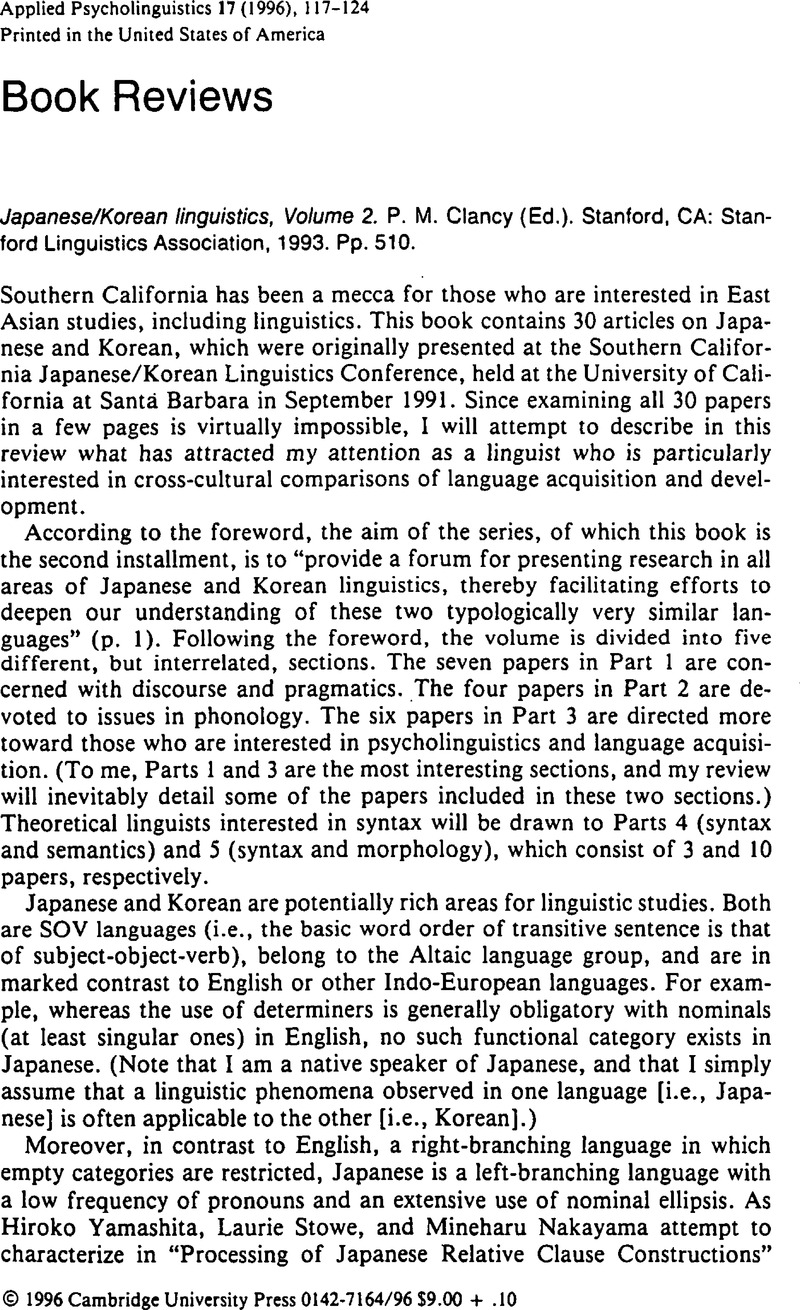No CrossRef data available.
Article contents
Japanese/Korean linguistics, Volume 2. P. M. Clancy (Ed.). Stanford, CA: Stanford Linguistics Association, 1993. Pp. 510.
Published online by Cambridge University Press: 28 November 2008
Abstract
An abstract is not available for this content so a preview has been provided. Please use the Get access link above for information on how to access this content.

- Type
- Book Reviews
- Information
- Copyright
- Copyright © Cambridge University Press 1996
References
REFERENCES
Berman, R. A., & Slobin, D. I. (1994). Relating even s in narrative: A crosslinguistic developmental study. Hilisdale, NJ: Erlbaum.Google Scholar
Bowerman, M. (1991). Mapping thematic roles onto syntactic functions: Are children helped by innate linking rules? Linguistics, 28, 1253–1289.CrossRefGoogle Scholar
Brown, P., & Levinson, S. (1987). Politeness: Some universals in language usage. New York: Cambridge University Press.CrossRefGoogle Scholar
Grice, H. P. (1975). Logic and conversation. In Cole, P. & Morgan, J. L. (Eds.), Syntax and semantics: Volume 3. Speech acts (pp. 41–58). New York: Academic.Google Scholar
Hall, E. T. (1989). Unstated features of the cultural context of learning. Educational Forum, 54, 21–34.CrossRefGoogle Scholar
Minami, M. (1995, 03). Japanese preschool children's personal narratives: A sociolinguistic study. Paper presented at the 1995 American Association for Applied Linguistics Conference, Long Beach, CA.Google Scholar
Pinker, S. (1984). Language learnability and language development. Cambridge, MA: Harvard University Press.Google Scholar
Slobin, D. I. (Ed.) (1985). The crosslinguistic study of language acquisition: Volume I. The data. Hillsdale, NJ: Eribaum.Google Scholar


